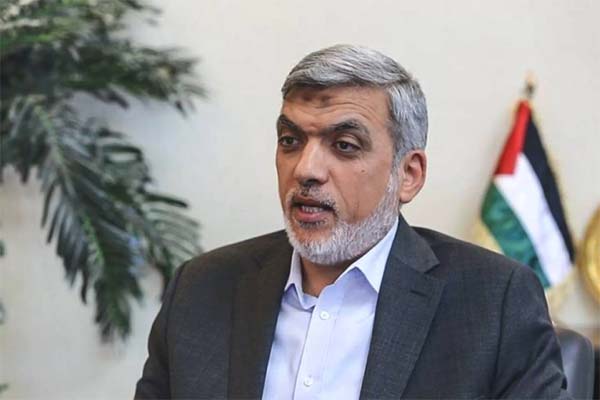By Dr. Tarek M. ElBaba
Abstract
Leadership within educational institutions plays a crucial role in influencing teaching performance. This article explores various leadership styles and their impact on high teaching performance. Specifically, it examines transformational, transactional, and distributed leadership styles. By analyzing these styles, the article aims to provide insights into which leadership approaches are most effective in fostering an environment conducive to high teaching performance. A case study is included to illustrate the practical impact of these leadership styles on teaching performance in international schools.
Introduction
Effective leadership is vital in shaping the success of educational institutions. The role of school leaders, such as principals and department heads, extends beyond administrative duties to directly influencing teaching quality and student outcomes. This research article investigates the correlation between different leadership styles and high teaching performance, focusing on transformational, transactional, and distributed leadership.
Literature Review
Transformational Leadership: Transformational leadership is characterized by leaders who inspire and motivate their staff through a shared vision and personal charisma. This leadership style involves four main components: idealized influence, inspirational motivation, intellectual stimulation, and individualized consideration. Transformational leaders foster an environment of trust and innovation, encouraging teachers to exceed their performance expectations.
Transactional Leadership: Transactional leadership, in contrast, is based on a system of rewards and punishments. Leaders employing this style focus on clear structures, expectations, and tasks, rewarding teachers for meeting specific goals and correcting them when they do not. This approach can lead to improved teaching performance by providing clear directives and incentives, but it may also limit creativity and innovation.
Distributed Leadership: Distributed leadership involves the delegation of leadership responsibilities across various members of the organization. This approach recognizes the collective expertise within the institution and empowers teachers to take on leadership roles, fostering a collaborative and inclusive environment. Distributed leadership is believed to enhance teaching performance by promoting shared responsibility and professional development.
Methodology
This research utilizes a mixed-methods approach, combining quantitative data from surveys and qualitative data from interviews. The study sample includes teachers and school leaders from various educational institutions. Quantitative data is analyzed using statistical methods to determine correlations between leadership styles and teaching performance. Qualitative data from interviews provides deeper insights into how these leadership styles are perceived and implemented in practice.
Results
Quantitative Analysis: The quantitative analysis reveals significant correlations between leadership styles and teaching performance. Transformational leadership is strongly correlated with high teaching performance, with teachers reporting higher levels of motivation and job satisfaction. Transactional leadership shows a moderate correlation, with effectiveness linked to well-defined goals and rewards. Distributed leadership also demonstrates a positive correlation, with teachers feeling more empowered and engaged in their professional roles.
Qualitative Analysis: Interviews with teachers and school leaders highlight the practical aspects of each leadership style. Teachers under transformational leadership report feeling more inspired and supported, leading to greater innovation in teaching methods. Those experiencing transactional leadership appreciate the clarity and structure, but some express concerns about limited autonomy. In schools with distributed leadership, teachers value the collaborative culture and opportunities for professional growth.
Case Study: International Schools
Background: Several international schools, varying in size and geographical location, have experienced changes in leadership styles over the past five years. Initially led by principals with predominantly transactional leadership styles, these schools achieved moderate success in meeting academic targets. However, recent shifts towards transformational and distributed leadership under new principals have been observed.
Leadership Transition: The new principals emphasized a shared vision for academic excellence and holistic student development. They introduced regular professional development workshops, encouraged collaborative teaching practices, and established systems where teachers could take on leadership roles within their departments.
Impact on Teaching Performance:
Transformational Leadership: Under transformational leadership, teachers at these international schools reported increased job satisfaction and motivation. The shared vision for the schools' futures fostered a sense of purpose and direction. Teachers felt more supported through individualized professional development opportunities and were inspired to innovate in their teaching methods. This led to noticeable improvements in student engagement and academic performance.
Transactional Leadership: While the previous principals' transactional leadership provided a structured environment with clear expectations, it often limited teachers' autonomy. Teachers reported feeling constrained by rigid performance targets and a lack of opportunities for professional growth. This approach was effective in achieving short-term goals but did not foster long-term innovation or satisfaction.
Distributed Leadership: The introduction of distributed leadership further enhanced teaching performance. By empowering teachers to lead initiatives and participate in decision-making processes, a collaborative culture was established. Teachers took ownership of school projects, leading to innovative teaching strategies and improved classroom practices. The distributed leadership model also facilitated peer learning and support, contributing to overall professional growth among the staff.
Outcomes
The shift towards transformational and distributed leadership in these international schools resulted in significant improvements in teaching performance. Standardized test scores increased, student engagement levels rose, and teacher retention rates improved. The collaborative and supportive environments cultivated by the new leadership styles were pivotal in these achievements.
Discussion
Transformational Leadership: Transformational leadership's emphasis on vision and motivation creates a dynamic and supportive teaching environment. Leaders who embody this style can cultivate a culture of excellence and continuous improvement. However, the success of transformational leadership depends on the leader's ability to effectively communicate and embody the shared vision.
Transactional Leadership: While transactional leadership provides clear expectations and rewards, it may stifle creativity if overly rigid. Balancing transactional elements with opportunities for professional autonomy can enhance its effectiveness. This style is particularly useful in situations requiring clear direction and accountability.
Distributed Leadership: Distributed leadership fosters a sense of ownership and collaboration among teachers. By leveraging the collective expertise within the school, this approach can lead to innovative teaching practices and improved performance. However, effective implementation requires a supportive culture and clear communication channels.
Conclusion
Leadership styles significantly impact teaching performance in educational institutions. Transformational leadership, with its focus on inspiration and personal development, appears to be the most effective in fostering high teaching performance. Transactional leadership, while beneficial for its clarity and structure, should be balanced with elements that encourage creativity. Distributed leadership, by promoting collaboration and shared responsibility, also shows strong potential for enhancing teaching performance.
The case study of international schools demonstrates how a combination of transformational and distributed leadership can lead to significant improvements in teaching performance. Future research should continue to explore the nuances of these leadership styles and their long-term impacts on teaching performance. Understanding the contextual factors that influence the effectiveness of each style can further inform leadership practices in education.
References
Bass, B. M. (1990). From transactional to transformational leadership: Learning to share the vision. Organizational Dynamics, 18(3), 19-31.
Burns, J. M. (1978). Leadership. Harper & Row.
Spillane, J. P. (2006). Distributed Leadership. Jossey-Bass.
Leithwood, K., & Jantzi, D. (2005). A review of transformational school leadership research 1996–2005. Leadership and Policy in Schools, 4(3), 177-199.
Hallinger, P. (2003). Leading educational change: Reflections on the practice of instructional and transformational leadership. Cambridge Journal of Education.













.jpg)







